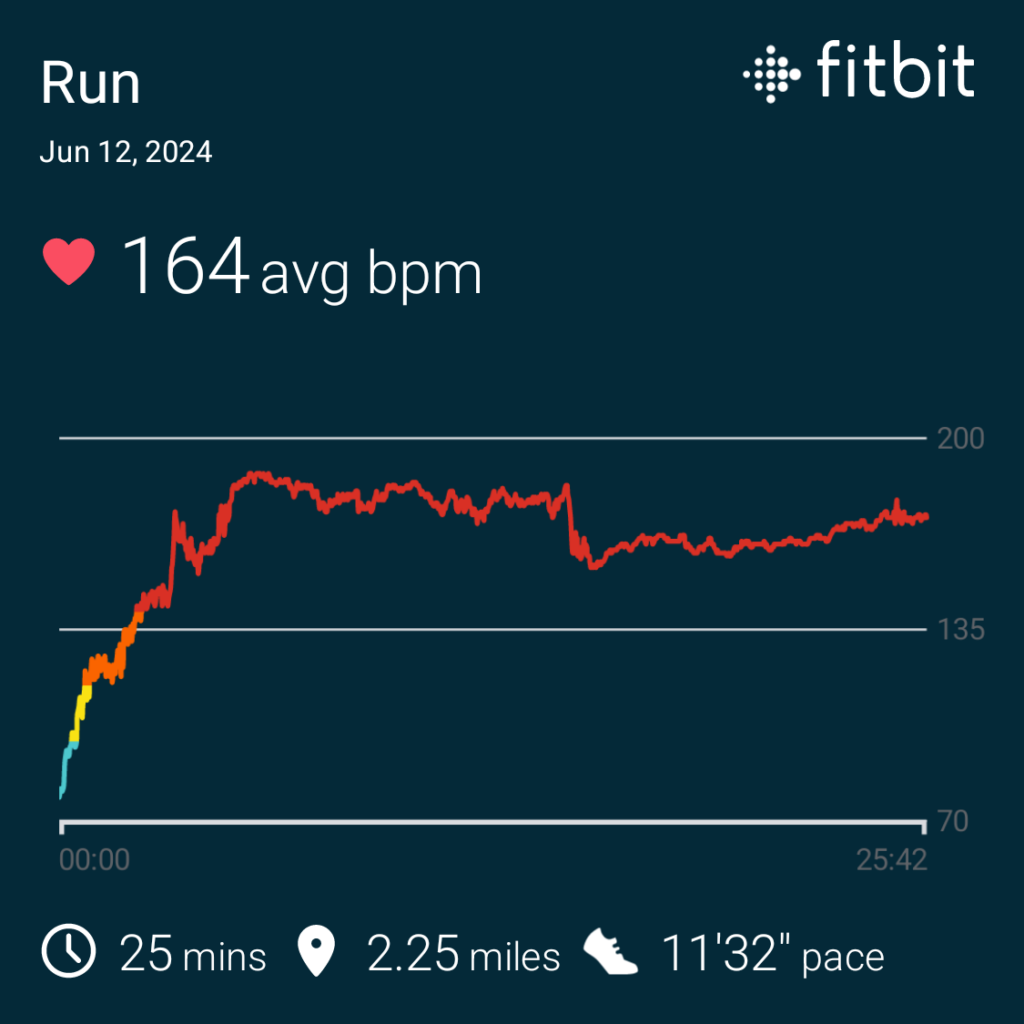All consumer-grade heart rate monitors have issues. Chest straps are pretty good. The optical captures from wrist (Google Pixel watch, etc.) or finger (Oura ring) are quite a bit less accurate.
I’ve generally just tolerated it—taking the reported data with a grain of salt—but sometimes it would be nice to get good data. Today I did a little experiment with my Google Pixel watch—tightening the strap at the midpoint of my run—and found that it seems to give me pretty good data this way.

What you see is my warm-up, followed by 1 mile out and then 1 mile back. The HR shown for the “out” phase (averaging maybe 180 bpm) is ridiculous—what it’s capturing is not my HR, but rather my step rate.
In the second half my HR goes from about 160 to slightly above 170 (gradually rising as I get tired), and that’s probably just about right.
(The standard formula for estimating your maximum heart rate is 220 minus your age, which would give a max HR of 156 for someone of my age. But that’s clearly wrong for me. I pretty regularly see peak HRs of just over 170 that seem entirely legit. I assume that my genes and my training history just give me a higher max HR than typical. Sadly, it doesn’t make me faster, as you can see from my average pace for this run. I was running literally as fast as I thought I could maintain for 2 miles.)
Anyway, I think I can recommend tightening up the Pixel watch band as tight as tolerable, for getting the most accurate data.